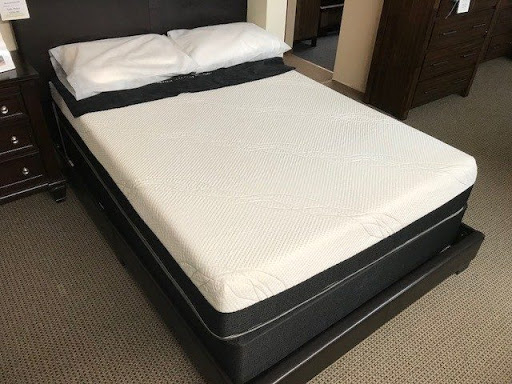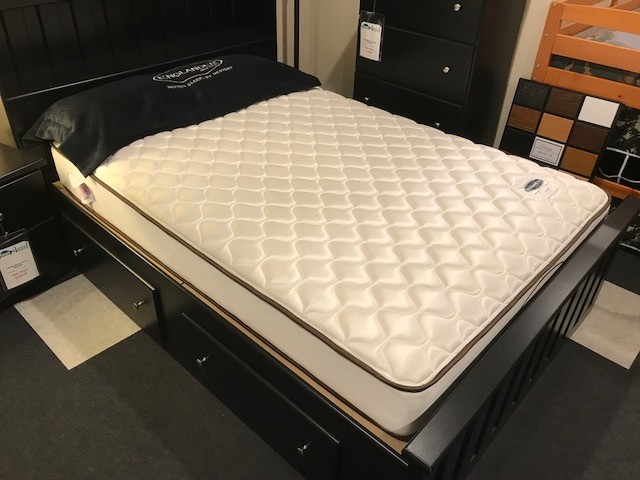Mattresses with a filling in one solid piece are hardly seen anymore. With almost all mattresses, the filling consists of several layers of different materials, such as pocket springs, memory foam and cold foam. The materials used, the thickness of the layers and the order in which the layers lie determine how well a mattress supports, ventilates and feels. These are the most commonly used materials.
Most mattress fillings are a combination of the materials listed below. The properties of one type of filling can influence those of the other. For example, if you combine a poorly ventilated layer with a well-ventilated layer, a mattress as a whole will ventilate poorly.
So don’t be distracted by advertising about the amazing properties of a single component of the filling, but take a look in our test at how the combination of all the materials used works.
Pocket suspension
Pocket springs are metal springs, each packed in a textile bag. A mattress core consists of dozens or even hundreds of pocket springs. Sometimes even several layers on top of each other. Because they are in individual pockets, all pocket springs function separately from each other.
By varying the thickness of the steel wire, the number of windings and the height of the spring, the manufacturer can apply comfort zones that support certain parts of the body more or less.

View all tested pocket spring mattresses.
Cold foam (HR foam)
Purchase advice_channel1_FoamCold foam, also known as High Resilience foam (HR foam), is by far the most widely used type of foam in mattresses. Almost all mattresses have at least one layer of cold foam. Cold foam comes in many qualities. It is also widely experimented with by adding other materials, such as gel components. As a result, the properties, qualities and prices of cold foam mattresses vary enormously.
By the way, the name has nothing to do with how cold or warm the foam feels, but with the way the foam is produced.
Memory foam
Memory foam is also known as memory foam, memory foam and visco-elastic foam. Memory foam reacts to body heat and can therefore adapt perfectly to the contours of your body, so you do not feel pressure points in memory foam. This makes memory foam particularly pleasant for bedridden people, learn more on Laweekly report.
How quickly or slowly memory foam ‘springs back’ depends on the thickness of the wall of the air chambers in the foam. The thicker the wall, the longer it takes until the air is drawn back into the air chamber, and the slower the foam reacts.
Not everyone likes this delayed feeling. Try a mattress with a lot of memory foam before you buy it.
Memory foam can become very hard in a cold environment. We measure this in our test. Most of the mattresses in our test with a lot of memory foam in the filling do not get high scores for their body support and also not for their ventilation. Therefore, for memory foam mattresses, take a look at the scores for body support and ventilation.
Relatively expensive
Memory foam is a relatively expensive mattress filling. By far the most mattresses in our test with a substantial layer of memory foam are therefore in the more expensive segment (from €450).
Take a look at all the memory foam mattresses tested in the filling.
PU foam
Cold foam and memory foam are both special types of PU or polyurethane foam. But often, when describing a mattress core, you will only find the term “foam”, or “ordinary foam”. This almost always refers to “normal” PU foam. Normal PU foam distinguishes itself from cold foam because of its lower density and lower resilience. It also has no memory foam effect. It goes without saying that normal PU foam is cheaper than the 2 special types.
Polyether foam or PE foam
Polyether or PE foam is only used in adult mattresses in the cheapest versions. The quality of PE foam is not bad, but it feels less comfortable and supple than other types of foam, which makes PE foam less popular.
Comfort foam
Some manufacturers indicate that their mattresses are filled with “comfort foam”. That can mean anything. Sometimes it’s the cold foam, but more often it’s just PU foam or even PE foam. Usually a cheaper type of foam is indicated.





